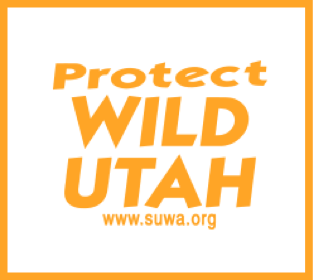|
For Immediate Release: August 9, 2006 Contacts: Rep. Maurice Hinchey Demands Inquiry into Apparent Improprieties in Public Lands Management as BLM’s West-wide Oil & Gas Leasing Program Reels from Court Decision SALT LAKE CITY (August 9, 2006) Rep. Maurice Hinchey (D-NY) today called for an internal Interior Department investigation into the implications of a newly obtained e-mail from a Utah lobbyist that suggests that agency officials may have made commitments behind closed doors to “fix” new land-use plans to assure more oil and gas development on wilderness-quality lands in the state. The revelation of the e-mail comes on the heels of a federal district court decision that held that the Bureau of Land Management (BLM) violated federal environmental laws when it sold oil and gas leases on 16 parcels of wilderness-quality lands in Utah in 2003. In the ruling, the court told BLM that, prior to leasing, it must update environmental analyses and examine the “wilderness qualities” of the land to be leased. Hinchey is lead sponsor of America’s Redrock Wilderness Act, which would protect more than 9 million acres of wilderness-quality BLM lands in Utah. In his letter to Earl Devaney, the Interior Department’s Inspector General, Hinchey, who serves on the House Appropriations Subcommittee on Interior that oversees BLM's budget, wrote, “Many in Congress, myself included, believe that the lands managed by the BLM in Utah are among the most splendid and spectacular landscapes in the world, and their environmental attributes are an extraordinary national asset that should be protected for future generations of Americans. Unfortunately, in making promises behind closed doors to certain parties who are primarily interested in maximizing the economic exploitation of these lands, BLM officials may have not only undermined the integrity of the agency’s land use planning process, but may have made commitments that will result in the permanent impairment of the environmental integrity of these lands for generations to come.” The leaked e-mail from Bob Weidner, a lobbyist on behalf of several Utah counties, reports on a meeting held in July 2006 with Henri Bisson (now acting Utah BLM state director) and Interior Department official Jim Hughes regarding oil and gas and other issues in ongoing Utah BLM Resource Management Plans (RMPs). In the note to his clients, Weidner writes, “We as counties owe it each other to strike while the iron is hot in finalizing these RMPs. As the governing documents over public lands for the next 20 years, working with the new State BLM Director and the State to ‘fix’ these RMPs is an opportunity which may never come again!” Bisson previously was BLM state director in Alaska, where he controversially opened to oil and gas drilling Teshekpuk Lake, an extraordinary waterfowl habitat that had been originally protected by Reagan administration Interior Secretary James Watt. “The clear implication of the Weidner e-mail is that BLM and the Bush Administration has breached the public’s trust,” said Stephen Bloch of the Southern Utah Wilderness Alliance. “BLM has apparently agreed to manipulate its blueprint for managing the public’s lands to benefit the oil and gas industry. The losers are other constituencies for these same lands, including hunters and fishers, outfitters and small businesses, local and state governments, and countless everyday Americans looking to escape into the West’s big sky country.” In response to the Weidner e-mail, Hinchey has asked the Interior Department’s Inspector General for an inquiry into the meeting that Bisson, Hughes and Weidner attended, as well as into the larger question of whether these plans are being rigged in favor of the oil and gas industry. The revelation about improprieties in the land-use planning process follows an August 2 federal district court decision in which the court ruled that the Bureau of Land Management (BLM) violated federal environmental laws when it sold oil and gas leases on 16 parcels of wilderness-quality lands in southern Utah. In the ruling, the court specifically rejected BLM’s practice to “lease now, think later,” stating that federal law required “that BLM postpone leasing in areas where the agency had significant new information about wilderness values that had not been adequately accounted for.” “The court unequivocally told BLM that, prior to opening public lands to oil and gas development, it must examine the wilderness values of those lands,” said Sharon Buccino, senior attorney for the Natural Resources Defense Council (NRDC), which filed the lawsuit with the Southern Utah Wilderness Alliance and The Wilderness Society. “If those resource management plans are rigged, as this new e-mail suggests, BLM is significantly shortchanging the American public, who share ownership of these irreplaceable lands.” According to Bloch of SUWA, the court case throws into question every Utah lease sale over the past three years, as well as lease sales in Colorado, New Mexico, and Wyoming that included wilderness-quality land. Since April 2003, the BLM has auctioned off more than 70,000 acres of proposed wilderness in Colorado and more than 160,000 acres in Utah, including land near Desolation Canyon, an area that BLM in 1999 described as representing “…one of the largest blocks of roadless BLM public lands within the continental United States." “It is mind boggling that the oil and gas industry, which has uncontroversial access to tens of thousands of acres of public lands, still schemes to drill land that BLM acknowledges is wilderness quality,” said Suzanne Jones, who directs The Wilderness Society’s Four Corners Office. “Fortunately, the federal court has reinforced a growing recognition throughout the West that some places are too special and too important to permit oil and gas corporations to destroy.”
|
|
|

 Southern Utah Wilderness Alliance
Southern Utah Wilderness Alliance
Protecting Utah's Redrock Country
